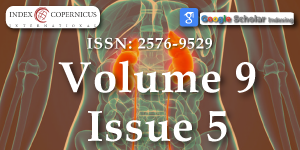Clinical Features and Outcome of Acute Interstitial Nephritis Diagnosed using Urinary Biomarkers - An Observational Study
Main Article Content
Article Details
Copyright (c) 2025 Shamanna SB.

This work is licensed under a Creative Commons Attribution 4.0 International License.
1 Praga M, González E. Acute interstitial nephritis. Kidney Int. 2010;77:956-61.
2 Nussbaum EZ, Perazella MA. Diagnosing acute interstitial nephritis: considerations for clinicians. Clin Kidney J. 2019;12:808-13.
3 Sathick IJ, Zand L, Kamal AN, Norby SM, Garovic VD. Acute interstitial nephritis: etiology, pathogenesis, diagnosis, treatment and prognosis. Nephrology Research & Reviews. 2013;5:13-20
4 Moledina DG, Wilson FP, Pober JS, Perazella MA, Singh N, Luciano RL, et al. Urine TNF-α and IL-9 for clinical diagnosis of acute interstitial nephritis. JCI Insight 2019;4:e127456.
5 Palanisamy T, Basu S, Srinivas BH, Shamanna S. Urinary Biomarkers for Non-Invasive Diagnosis of Acute Interstitial Nephritis. Indian J Nephrol. 2024;34:409-410.
6 Wu Y, Yang L, Su T, Wang C, Liu G, Li XM. Pathological significance of a panel of urinary biomarkers in patients with drug-induced tubulointerstitial nephritis. Clin J Am Soc Nephrol. 2010;5:1954-9.
7 Shankar M, Gurusiddaiah SC, Mutalik S, Aralapuram K. Changing Tides of Acute Interstitial Nephritis: A Retrospective Observational Study from South India. Indian J Nephrol. 2023;33:362-365.
8 Surendra M, Raju S, Chandragiri S, Uppin MS, Raju N. Steroid therapy in drug induced acute interstitial nephritis- Retrospective analysis of 83 cases. Saudi J Kidney Dis Transpl. 2019;30:157-165.
9 Ramachandran R, Kumar K, Nada R, Jha V, Gupta KL, Kohli HS. Drug-induced acute interstitial nephritis: A clinicopathological study and comparative trial of steroid regimens. Indian J Nephrol. 2015;25:281-6.
10 Nussbaum EZ, Perazella MA. Diagnosing acute interstitial nephritis: considerations for clinicians. Clinical Kidney Journal. 2019;12:808-13
11 Moledina DG, Perazella MA. The Challenges of Acute Interstitial Nephritis: Time to Standardize. Kidney360. 2021;2:1051-1055.
12 Moledina DG, Perazella MA. PPIs and kidney disease: from AIN to CKD. J Nephrol. 2016;29:611-6.
13 Chowdry AM, Azad H, Mir I, Najar MS, Ashraf BM, Muzafar WM, Ahmed WI. Drug-induced acute interstitial nephritis: Prospective randomized trial comparing oral steroids and high-dose intravenous pulse steroid therapy in guiding the treatment of this condition. Saudi J Kidney Dis Transpl. 2018;29:598-607.





